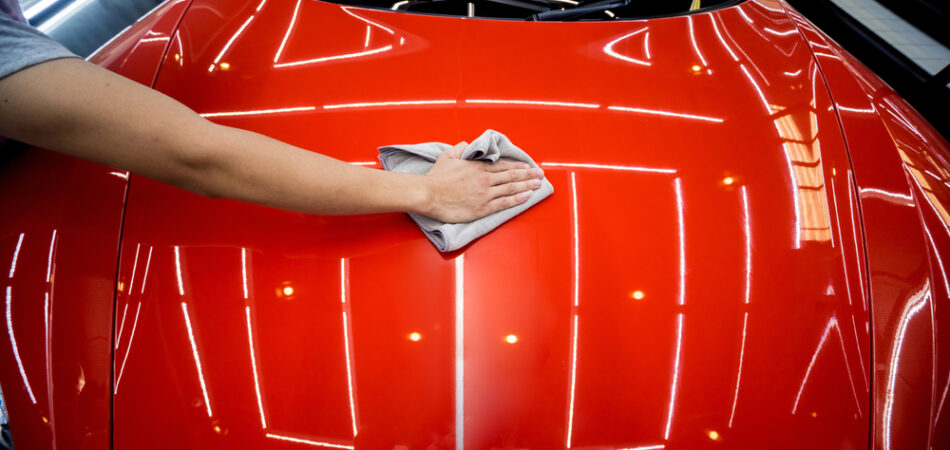Expert Ceramic Coatings San Jose for Superior Gloss and Resilience
Expert Ceramic Coatings San Jose for Superior Gloss and Resilience
Blog Article
Introducing the Scientific Research Behind Ceramic Coatings: Just How Does It Work and Why Is It Above Traditional Options?
Ceramic finishings have been obtaining appeal in different industries for their exceptional efficiency and longevity. Comprehending how ceramic coatings job and why they exceed conventional choices is vital for those seeking to boost the long life and resilience of their products.
The Chemistry of Ceramic Coatings
In recognizing ceramic finishings, delving right into the elaborate chemistry behind their structure is vital for understanding their functionality and durability. Ceramic layers are mostly composed of silicon dioxide (SiO2), which develops a safety and solid layer when applied to numerous surfaces. This chemical structure offers outstanding resistance to warm, chemicals, and deterioration, making ceramic finishings highly demanded for a vast variety of applications.
The chemistry behind ceramic coatings includes the development of covalent bonds between silicon and oxygen atoms, producing an inflexible network that enhances the finish's toughness and toughness. Additionally, the existence of various other elements such as titanium, light weight aluminum, and zirconium more enhances the finishing's residential properties, offering enhanced solidity and adhesion to surfaces.
Comprehending the chemical composition of ceramic finishes allows for the personalization of solutions to suit particular requirements, whether it be for automotive, commercial, or household purposes. By utilizing the power of chemistry, ceramic finishes remain to lead the means for superior protection and performance in various industries.
Benefits of Ceramic Coatings

As a result, ceramic layers make cleaning and preserving surface areas much less complicated and less time-consuming. In general, the wide range of advantages offered by ceramic finishings make them a premium option contrasted to conventional layer techniques.
Just How Ceramic Coatings Bond
Ceramic coatings bond to surface areas via a process that entails molecular adhesion and chemical interactions. When a ceramic finishing is put on a surface area, it creates a solid bond by chemically sticking to the surface area at a molecular degree. This bond is developed via the development of covalent bonds, which are durable and extremely strong. The ceramic coating's molecules penetrate the pores of the surface, creating a tight grip that stands up to splitting up.
Additionally, the chemical interactions between the ceramic covering and the surface better boost the bond. ceramic coatings san jose. These communications enable the ceramic covering to create a constant and seamless layer externally, offering exceptional security and durability. Unlike conventional finishes that might rest on the surface without completely bonding, ceramic finishings produce a long-term bond that is immune to chemicals, UV rays, and rough environmental problems

Essentially, the bonding mechanism of ceramic finishings guarantees a efficient and long-lasting safety layer that exceeds traditional finish choices. This premium bond adds to the durability, scrape resistance, and longevity of ceramic finishes, making them a preferred selection for different applications.
Longevity of Ceramic Coatings
The phenomenal durability of ceramic layers comes from their durable molecular adhesion and chemical communications with surface areas, making sure a durable protective layer that surpasses click resources conventional coating choices. As soon as used, ceramic finishes form a strong bond with the substratum, creating a resilient obstacle against different environmental stressors such as UV radiation, chemicals, and abrasions. This bond is so safe and secure that it can endure the rigors of everyday usage without wearing away or deteriorating promptly.
Unlike standard finishings that might degrade over time, ceramic coatings keep their stability for an extended duration, offering long-lasting defense for the underlying surface. In general, the outstanding toughness of ceramic coverings makes them an exceptional selection for shielding a broad range of surface areas in numerous applications.
Ceramic Coatings Vs. Traditional Alternatives
In comparison to conventional covering techniques, ceramic coatings supply a distinct mix of longevity and safety capabilities that set them apart in various surface area defense applications. Conventional options such as wax or sealers offer a short-lived layer of protection that can wear away promptly, needing regular reapplication. On the various other hand, ceramic coatings create a solid bond with the surface area, creating a irreversible or semi-permanent barrier that is extremely immune to abrasion, chemicals, UV rays, and severe temperature levels.
Additionally, ceramic finishings provide remarkable hydrophobic homes compared to traditional coverings. The hydrophobic nature of ceramic finishes triggers water to grain up and roll off the surface area, lugging dirt and impurities with it. This self-cleaning effect aids to keep the surface's cleanliness and gloss for extended periods, reducing the requirement for constant maintenance.
Additionally, ceramic coatings have a thicker layer contrasted to typical options, offering boosted scratch resistance and protection against small effects. This resilience makes certain lasting efficiency and aids maintain the visual allure of the dealt with surface for an extensive duration.
Conclusion
Finally, the science behind ceramic coverings depends on their chemical make-up and bonding homes, making them above standard alternatives. The advantages of ceramic finishes include raised sturdiness and defense for surface areas. By recognizing just how ceramic layers work and their benefits over traditional alternatives, one can make educated decisions when considering layer choices for different applications.
Unlike conventional finishes that might sit on the surface without totally bonding, ceramic finishings create a permanent bond that is immune to chemicals, UV rays, and severe ecological conditions.
The remarkable long life of ceramic coatings stems from their durable molecular bond and chemical communications with surface areas, guaranteeing a durable protective layer that surpasses conventional covering alternatives.Unlike traditional layers that may deteriorate over time, ceramic layers preserve their integrity for an extended period, offering durable defense for the underlying surface.In contrast to traditional finishing techniques, ceramic layers supply a distinct blend of resilience and protective abilities that establish them apart in various surface area defense applications. By recognizing exactly how ceramic layers work and their benefits over standard choices, one can navigate here make enlightened choices this hyperlink when taking into consideration finish alternatives for various applications.
Report this page